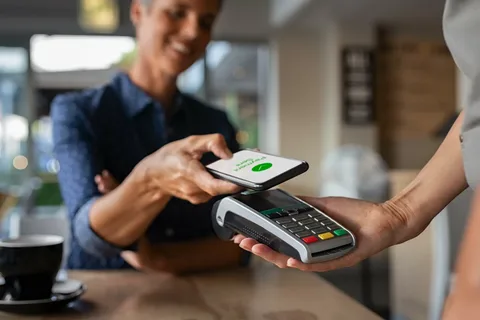Smartphones have become everyday assistants, guiding morning alarms, weekend shopping, and late-night streaming. A single tap can transfer money across continents or introduce a brand-new feature to a home screen. Yet with this comfort comes a simple question: how do we keep apps current and payments smooth without risking device health or personal data?
The early days of mobile software involved occasional updates through a desktop cable. Today, fresh versions appear almost weekly, often adding security patches or small tweaks that save time. Staying current prevents slowdowns, helps apps run well on newer operating systems, and blocks known exploits that scammers might try.
If you’re looking for a straightforward source when an app requests its next update, searching for the Parimatch APK download new version can guide you to a reliable file—just double-check the link, confirm its date, and only then tap “Install.”
Why Updates Arrive So Often
Developers rarely stand still. They release fresh code to patch bugs, adapt to new hardware, or introduce lighter graphics that ease battery drain. Although update notes can appear technical, three benefits are clear to everyday users:
- Faster load times—leaner files reduce waiting.
Better compatibility—newer operating systems stay happy. - Safer transactions—holes that hackers seek are closed.
Regular refresh cycles also enable companies to integrate tools for cashless living, such as instant wallet top-ups, facial recognition sign-ins, or QR scanning for local transportation.
Below is a brief comparison of where people typically obtain updates and what each route entails in terms of performance and safety.
| Download Source | Verification Steps Included | Update Frequency | Relative Risk |
| Official App Store | Automatic checks, reviews | High | Low |
| Direct Link from Developer | Manual checksum or QR code | Medium to High | Moderate |
| Third-Party Aggregator Site | Varies by site policies | Unpredictable | Higher |
Each option exists for a reason — some regions block certain stores, while others prefer smaller APK sizes from a direct server. Still, using a path with clear verification keeps surprises away.
Deposits, Top-Ups, and the Human Factor
Beyond installing software, many users perform money tasks on the same phone — paying for food deliveries, renewing streaming services, or splitting bills with friends. A well-made payment screen hides complexity behind clear labels, progress bars, and confirmation emails. Yet speed can tempt rushed clicks. Slowing down for a second check the amount, receiver, and currency, prevents regret later.
Modern apps often include “deposit reminders,” which nudge users when their wallet funds are low. Some even suggest daily limits or cooling-off periods, features that encourage smart spending rather than impulse purchases. Reviewing these settings once a month brings spending habits into view and avoids end-of-week surprises.
Below are four quick habits that strengthen both app upkeep and payment peace of mind.
- Set automatic updates on Wi-Fi only. This prevents data overuse during travel or capped plans.
- Create a simple folder for finance tools. Keeping banking, wallet, and reward apps together reduces search time and highlights any unknown icons that may sneak in.
- Enable biometric confirmation. A fingerprint or face scan adds an extra layer of security if your phone slips from your hand.
- Check version numbers before any big transfer. A mismatch between app and system dates can cause failed transactions or display glitches.
Storage Space, Battery Life, and Silent Clean-Up
A phone filled with photos, cached files, and half-used apps can slow down under the weight. Deleting unused programs frees up space, but clearing their hidden data is also important. Many Android versions now show exactly when each app last opened; anything untouched for ninety days is a candidate for removal.
Battery life also improves with fewer background processes. Updated apps usually manage energy more efficiently than outdated ones, utilizing new system calls that pause correctly when a screen goes to sleep. Turning off auto-playing videos inside social feeds further extends charge cycles, which is ideal on days when a power outlet is not available.
Balancing Convenience and Care
The idea of Digital life should be easy, yet safety lies behind every easy glide. The selection of recommended download links, verification of payment screens, and minimization of app clutter protects finances, as well as on-device memories.
Technology will keep developing: there are foldable screens, faster networks, and smarter AI-assistants on the horizon. The fundamentals are however unchanged: make sure you check your sources, update the software, and every deposit page must be treated just the way you would treat a real wallet. And, with these features intact, the pocket computer works steadily when the alarm goes off in the morning and when the playlists are desired at midnight, and the rest of the tasks so quietly accrues that the technology is almost forgotten by the user.

